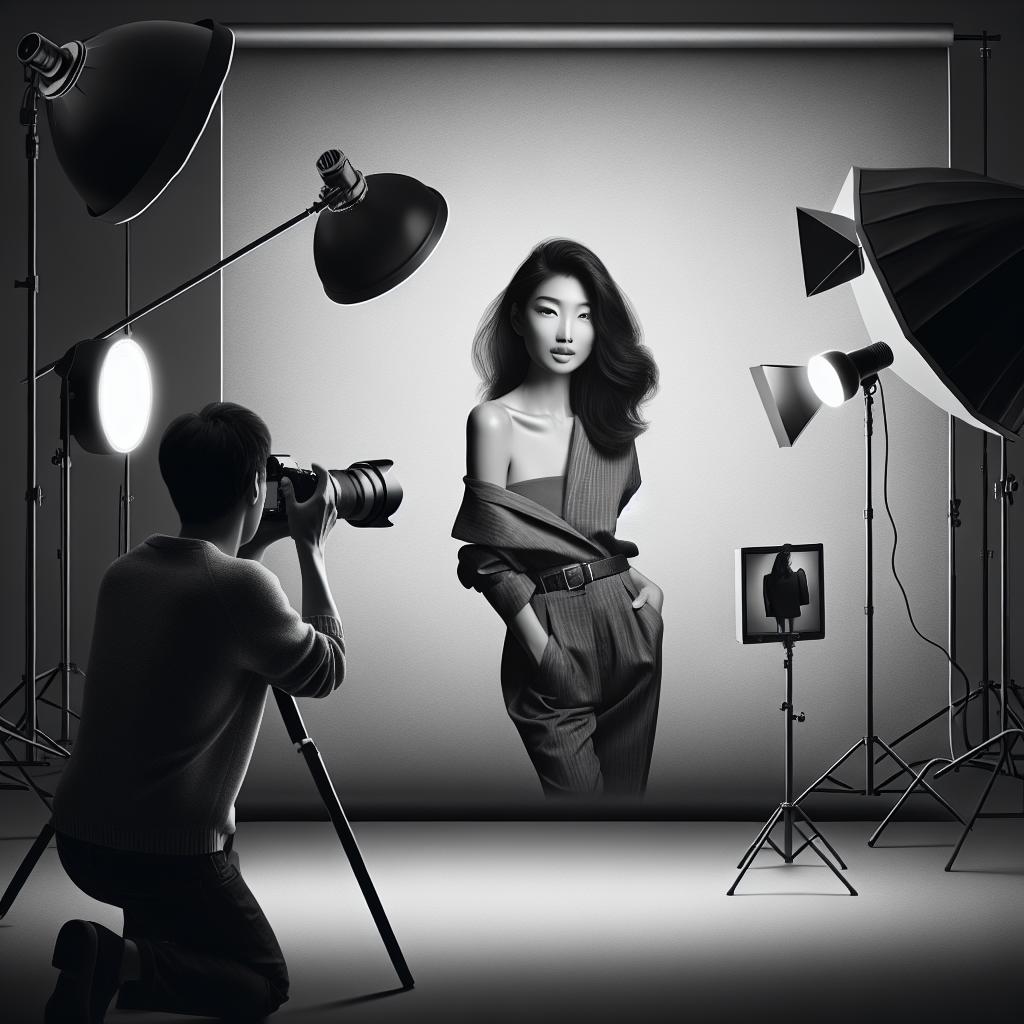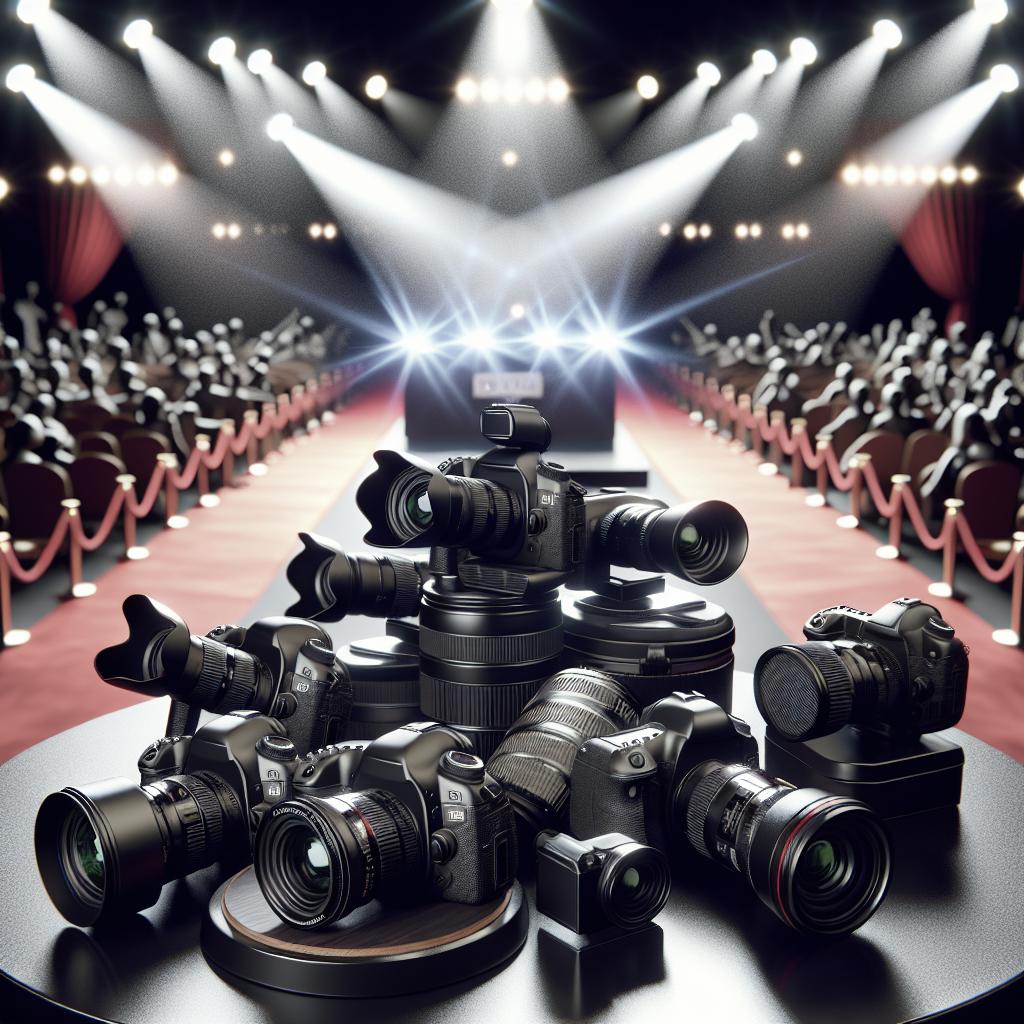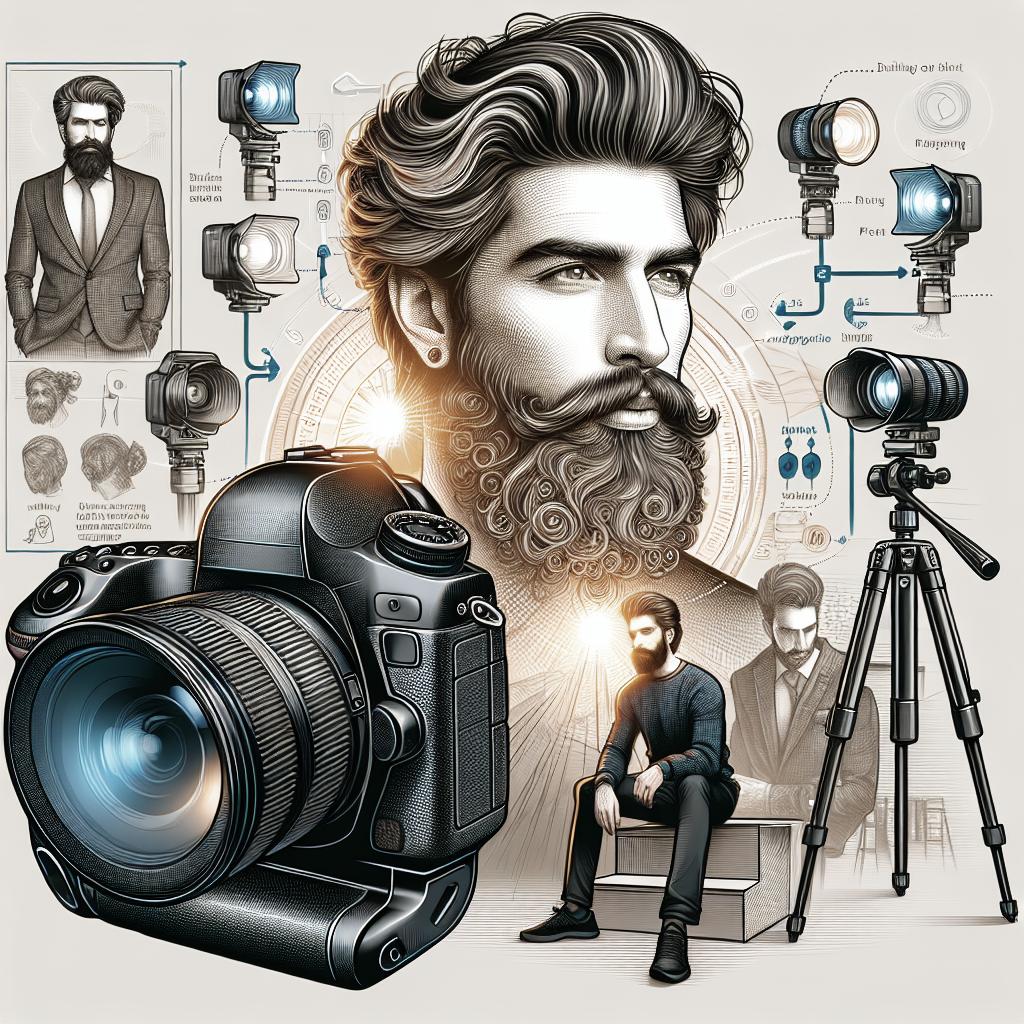<>
Black and white portrait photography is a timeless art that draws attention to the raw, emotive aspects of a subject without the distraction of color. By focusing on contrast, texture, and composition, photographers can create compelling images that highlight the character and mood of their subjects. This blog post will guide you through the techniques, settings, and creative decisions necessary for capturing stunning black and white portraits. From choosing between digital or film, to understanding how to pose your subjects and edit your images, each section offers practical tips to refine your skills. You’ll also delve into advanced concepts such as utilizing negative space and chiaroscuro lighting to add drama and depth to your portraits. Whether you’re a beginner or an experienced photographer, these insights will help you elevate your black and white portrait work. “`
Shooting black and white portrait photography
Choose digital or film
“` When embarking on your black and white portrait photography journey, your first decision is whether to shoot digitally or with film. Each medium has its own unique set of characteristics and advantages. Digital photography offers the convenience of immediate feedback and more control over the post-processing phase. Modern digital sensors capture extensive dynamic range, allowing photographers to manipulate tones in post-production to achieve the desired contrast and mood. On the other hand, shooting on film brings a classic, organic quality to portraits that many photographers find appealing. The grain and texture inherent in different types of black and white film can add a nostalgic or authentic feel to your images. Furthermore, film photography encourages a more deliberate approach to each shot, as the limited number of exposures per roll and absence of instant feedback necessitate careful planning and consideration. “`
Black and white portrait photos tips
Shoot for black and white
“` When shooting for black and white, it’s essential to think in terms of tones and contrasts rather than colors. Visualize how different elements will translate into shades of grey. This often means paying closer attention to the lighting, textures, and shapes within your frame. High contrast lighting can create a striking impact, emphasizing the depth and dimension of your subject. Conversely, softer lighting and gentle transitions between light and shadow can result in a more ethereal and tender feel. Additionally, consider the environment and background to avoid distractions and focus on your subject. Simple backgrounds or those with significant texture can either complement or contrast with your subject, enhancing the overall composition. Always remember that black and white photography requires a keen eye for detail, as even the subtlest elements can significantly impact the final image. “`
Black and white portrait photography settings
Select your camera settings
“` Optimizing your camera settings is critical for achieving captivating black and white portraits. Begin by shooting in RAW format to preserve the maximum amount of data, providing greater flexibility in post-processing. Choosing the right ISO is also vital; a lower ISO setting (100 or 200) ensures minimal noise and greater image clarity, ideal for capturing fine details. However, don’t shy away from higher ISOs if you are looking to incorporate some grain for a vintage look. Adjust your aperture according to the desired depth of field. A wide aperture (f/1.8 or f/2.8) can beautifully blur the background and focus intensely on the subject, while a narrower aperture (f/8 or higher) can achieve greater sharpness across the image. Shutter speed should match the lighting conditions and desired motion effects—faster speeds for crisp, still portraits, and slower speeds for a sense of movement. “`
Black and white portrait photography lighting
Experiment with lighting
“` Lighting is the cornerstone of effective black and white portrait photography. Experimenting with various lighting techniques can drastically change the mood and visual impact of your images. Natural light is a fantastic starting point, offering a soft, diffused quality when shot during golden hours. Position your subject where the light accentuates their features, such as near a window or outdoors during sunrise or sunset. Artificial lighting, such as softboxes or studio lights, grants precise control over the scene. You can manipulate the light source’s intensity, direction, and distance to create dramatic contrasts or soft, even illumination. Consider using a single light to cast stark shadows and highlights, creating a dramatic, high-contrast image. Alternatively, multiple light sources can fill in shadows for a more balanced, polished look. “`
B&W portrait posing tips
Pose your subjects
“` Posing plays a significant role in black and white portrait photography, as the lack of color places more emphasis on body language, expressions, and overall composition. Guiding your subjects into natural and comfortable poses will help capture their authentic emotions. Encourage your subjects to experiment with different angles, head tilts, and expressions to find the most flattering perspectives. Expressions are crucial in conveying emotion and personality. Capture candid moments or direct your subjects to display specific feelings through their expressions. Subtle changes in their gaze or a soft smile can transform the entire mood of the portrait. Pay attention to hands and body posture, ensuring they complement the focus on the subject’s face. “`
How to do black and white portrait photography
Utilize negative space
“` Negative space is a powerful compositional tool in black and white portrait photography. It refers to the area around and between the subject, which can be used to create a sense of balance and draw attention to the focal point. By incorporating ample negative space, you can highlight the subject and convey a sense of simplicity and elegance. In portraits, negative space can help isolate the subject, making their features stand out more prominently. This technique is especially effective when shooting against plain backgrounds or using shallow depth of field to blur the surroundings. Remember that less can often be more—an uncluttered composition allows the viewer’s eye to gravitate naturally towards the subject, enhancing the image’s impact. “`
Editing black and white portrait photography
Editing black and white portraits
“` Editing is where you can truly bring your black and white portraits to life. Begin by converting your images to black and white using software such as Adobe Lightroom or Photoshop. Utilize the tools available to adjust the contrast, brightness, and sharpness to enhance the textures and tones. Pay close attention to the histogram to ensure a good range of blacks, whites, and grays without losing details. Experiment with dodging and burning to selectively lighten or darken areas of your portrait, adding depth and focus to specific features. Additionally, adjust the clarity and structure settings to enhance fine details like facial lines or textures in clothing. Subtle vignetting can also draw attention towards the center of the image, emphasizing the subject even further. “`
UP NEXT
Chiaroscuro lighting and its effects
“` Next, delve into the dramatic world of chiaroscuro lighting, a technique that uses strong contrasts between light and dark to create a sense of volume and three-dimensionality. This method adds intense drama to your black and white portraits by highlighting contours and textures while casting deep, mysterious shadows. Understanding how to use chiaroscuro lighting can elevate your portrait photography, infusing it with classic and timeless appeal. With chiaroscuro lighting, strategically placing light sources becomes crucial. Direct a single, strong light source at your subject, manipulating the angles to cast sharp shadows and illuminate specific features. Mastering this technique requires practice and experimentation, but the resulting images will undoubtedly stand out with their striking depth and emotional resonance. “`
Showcase your vision with elegant shot lists and storyboards
“` Maximize your efficiency and creativity by using shot lists and storyboards. Planning every aspect of your shoot allows you to stay organized and focused, ensuring you capture all the desired elements. Create a detailed shot list with specific poses, lighting setups, and compositions. Break down your vision into individual shots, refining your concepts for a cohesive series of images. Storyboards provide a visual representation of your ideas, offering a clear guide to follow during the shoot. Draw or sketch your intended compositions, noting the angles, lighting setups, and poses. Having a storyboard on hand helps communicate your vision to the subject and any assistants, making the entire process smoother and more efficient. “`
Related Posts
Related Posts
“`
| Topic | Summary |
|---|---|
| Shooting black and white portrait photography | Choosing between digital and film for unique effects and approaches in your portraits. |
| Black and white portrait photos tips | Focus on tones, contrasts, and capturing environments to enhance black and white images. |
| Black and white portrait photography settings | Adjusting ISO, aperture, and shutter speed for optimal black and white portraits. |
| Black and white portrait photography lighting | Experimenting with natural and artificial lighting for impactful results. |
| B&W portrait posing tips | Guiding subjects into natural poses and capturing authentic expressions. |
| How to do black and white portrait photography | Using negative space effectively to draw attention to the subject. |
| Editing black and white portrait photography | Techniques for converting and enhancing black and white portraits in post-processing. |
| UP NEXT | Exploring chiaroscuro lighting for dramatic and dynamic portrait effects. |
| Showcase your vision with elegant shot lists and storyboards | Using planning tools to streamline your creative process. |


